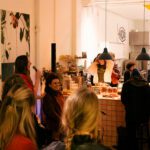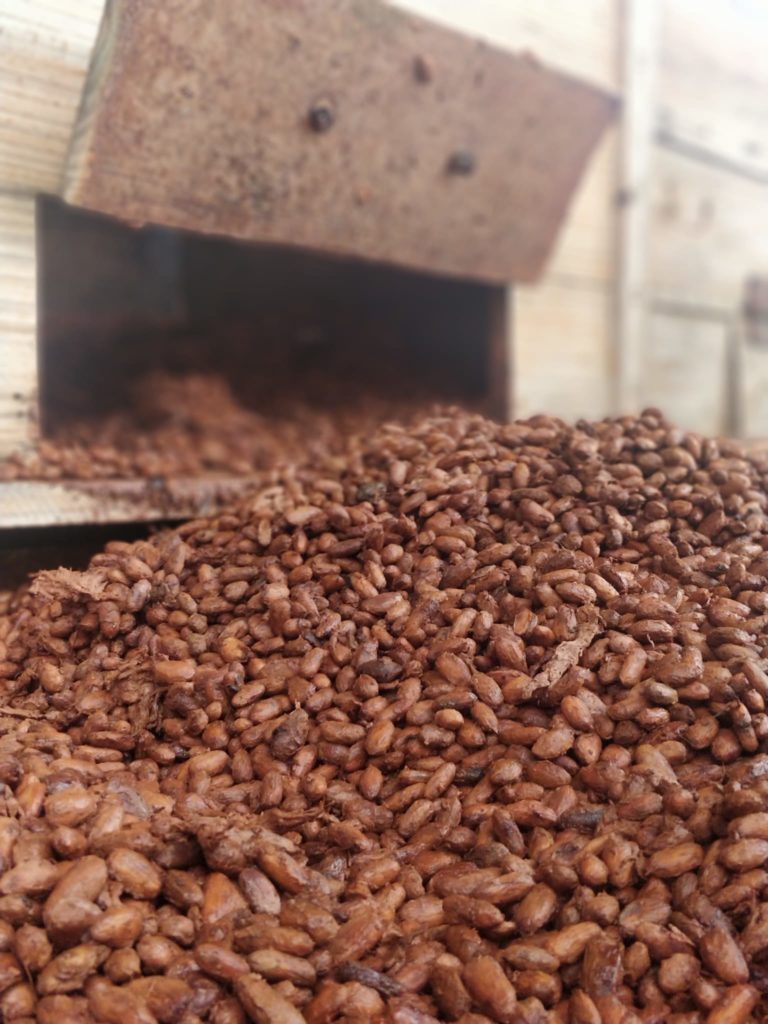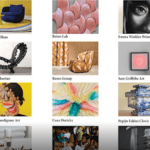
Wild Child Cacao 2.0 is open! Come and visit us in Amsterdam
On the 1st of December 2023 Wild Child Cacao 2.0 opened!
Wat a fun party it was…
Marketing or health?
First of all, there are some amazing marketeers behind the concept of raw cacao. Most people who drink chocolate have heard about it. Cacaolovers that are conscious or adventurous enough to drink 100% cacao are usually interested in its health benefits and ‘raw’ seems healthy, right? So, lets dive a bit deeper:
The definition of raw cacao
The Beginners Guide of The Raw Food Diet says: “A food is considered raw if it has never
been heated over 104–118°F (40–48°C). It should also not be refined, pasteurized, treated
with pesticides or otherwise processed in any way”. As there are many definitions, let’s just stick with this one for now.

The process behind quality cacao
The cacao fruit grows on a tree. Inside the pod of this fruit are its seeds, surrounded by a white,
very tasty pulp. These seeds are the cacao beans. In good quality cacao, these beans are taken out
of their pod and are fermented to give them their nice and deep flavor. This fermentation
happens naturally; the fruity pulp is full of sugar and combined with the tropical climate creates the perfect environment for the bacteria.
During this fermentation process, the temperatures almost always gets above 48°C. This means from this point cacao is technically not raw anymore.
After fermentation the beans are sundried. This process also creates a lot of heat. Once you’ve fermented the beans, you can’t sprout them.
There might be a few farmers who intentionally stir their beans a lot while fermenting and keep pulling them in and out of the sun while drying to keep the temperatures down, but this is not common practice. Definitely not in the amounts of “raw” chocolate we find on the market.
So, raw chocolate doesn’t exist?
Well, it’s very uncommon. Unless you eat the fresh beans straight out of the cacao pod that you júst picked from a tree. Cacao (as in the block you make your drinks from, or the bar you take a bite from, or even the powder you bake with) is a fermented product that was heated and has been processed to change its shape and flavor.
My guess is that what most brands mean is that their cacao is ‘not ROASTED’. The reason for this can be flavor or health believes. Or, it could be the cacao is roasted on ‘low temperatures’. Yet, then using ‘raw cacao’ is a misleading term.
Do we roast our cacao?
Heavens YES. Besides flavor development (hello, depths of fruits and chocolate flavors) that truly excite me as a craft chocolate maker, it also has a different effect on our bodies. Foods change chemically when they are fermented and heated. Still relatively little research has been done on the effect of heat on cacao and how our bodies process the nutrients but the results so far seem to be similar as coffee: green coffee and unroasted cacao have more nutrients inside them, but our bodies are not capable of digesting them. After a heating
process, our bodies are able to digest and in the end, actually get in more nutrients than with unroasted cacao.
Personal experience
Traditionally, in Mayan and Aztec culture, cacao was/is roasted over the fire.
But hey, we all have different bodies and in the end, you gotta find out what works for yourself!
So I hope that after reading this, you have a better understanding of the word raw when we talk about cacao and we can all look a bit better beyond marketing techniques.
Got any questions? Don’t hesitate to ask!
Love,
Malou

On the 1st of December 2023 Wild Child Cacao 2.0 opened!
Wat a fun party it was…

A childhood dream comes true: we are going to sail the trans-atlantic! A big adventure, bringing our cacao from the Dominican Republic back to Amsterdam…

The last couple of months we have been renovating our new 120m2 square meters cacao haven! Our upgraded place is going to be wild! We invite you to come and take a look…

Wanna get your creative juices flowin’? Come to GLUE 2023, a design route at the canals of Amsterdam. From 14 to 17 September…
